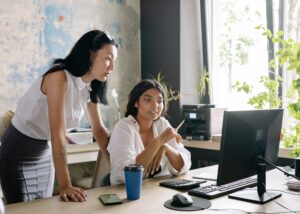
LORA is an RF modulation technology for low power large area networks (LPWAN). This is a cloud-based Media Access Control layer protocol that acts as a network layer protocol to manage communication between LPWAN gateways, end nodes and devices via a routing protocol maintained by the LORA Alliance. Using the Media Access Control (Mac) protocol, the Low Range Wide Area Network (Lorawan) is an open standard defined by the Alliance, taking into account the energy-efficient nature of the protocol and the fact that many battery powered devices rely on it [4].
Lorawan is responsible for managing the frequency, data rate and performance of the devices. Lorawan defines the communications protocol and system architecture of the network in LORA Architecture and therefore IBM my support enables far-reaching communication connections. It defines Lora Alliance’s communication protocol, system architecture and network architecture at the physical level, enabling communication connections with greater reach.
The communication protocol and the system architecture of the network collectively determine the battery life of each node, network capacity, service quality, security and other applications that serve the network. One area where Lorawan differs from other network specifications is the use of a STAR architecture, where the central node and other nodes are connected to a gateway that acts as a transparent bridge that sends messages from terminal devices to the central network server in the backend.
The gateways connect to the network server via a standard IP connection, while the terminal devices use wireless single-hop communication via one or more gateways. Terminals and gateways interact with each other via data transmission loops and other frequency channels that best match the system’s performance, speed, start-up and range limitations.
LORA uses data rates between 0.3 kbps and 50 kbps and prevents interfering communication between the gateways by creating a series of virtual channels that increase the capacity of the gateways. LORA distributes the communication between terminal devices and gateways over several frequency channels and data rates. By modulating other integrated circuits in the gateway, LORAs can perform other enhancements such as modulation to filter out noise and the fractures you see in the signal.
When a gateway receives and interprets a data packet with LORA technology, it forwards it to a network server via a standard IP connection (e.g. Ethernet or 3G). If the network server receives the same data packet from several gateways, it processes one of them and ignores all copies. When it receives three of the same data packet (recycle bin) and connects to three gateways (as in our illustration), only one of them is processed, allowing for more accurate and efficient data transmission.
This group of incoming messages from the Lorawan gateways is within the range of the network sensors. As soon as the LORA gateways receive and send the data packets, the message is forwarded from the gateways to the upstream network server, which is considered the intelligent and sophisticated part of the Lorawans network. This process is reversed to the process described above, in which the message is sent so that the corresponding end application can reconfigure the terminal device.
For multiple gateways, the best gateway area is selected to download messages to a specific device. High capacity LORA servers can handle millions of messages from thousands of gateways.
Lorawan network architecture can be used in star-to-star topology or mesh topology (e.g. Public / Private Provision – It is easy to use a public / private Lorawan network with the same hardware (gateways, terminal equipment, antennas, software, UDP packet forwarding, base station software) as the Lorawan batch of terminal equipment. Communication between sensors, nodes and base stations takes place via wireless channels that use the physical level of LORAs, while the connection between gateways and network servers forms the backbone of the IP-based network.
The LORA network server is the interface between the application server and the gateway. The network server performs functions such as ensuring that there are no duplicate packets, scheduling the receipt and managing the data rate (RF) that is output to the terminal via the adaptive data rate scheme (ADR). It forwards commands from the network server to the gateway and transfers data from the gateway to the server.
LORA is a physical PHY bit layer implementation defined by OSI in the seven-layer network model shown in Figure 3. Airborne cabling serves as a means of transport for LORA’s radio waves (RF transmitters) between IoT platforms and devices (RF receivers / gateways) and vice versa.
For most applications, the device is an autonomous, battery-powered sensor that digitizes physical conditions and environmental events. Lorawan enables the sensors and actuators of the terminal devices to connect to the Lorawan network via radio gateways using LORA’s RF modulation. The Lorawan Gateway receives the modulated LORA RF message from the IoT platform and can remotely hear the RF messages from the Lorawan network servers (LNs) connected to the IP backbone.
The Lorawan protocol supports three device classes for a variety of application requirements with different trade-offs in hearing and battery consumption : A, B and C. There is no fixed connection between a terminal device and a particular gateway. To optimize the variety of end-user profiles, Lorawan ™ uses three different device classes in which terminal devices can be configured.
This is used to launch POC projects with long-term contractual obligations and monthly payments based on connectivity usage and the number of devices connected to the cloud.
LORA gateways such as the ones listed above are physical devices (internal hardware and firmware) that are used to connect IoT platforms and devices to the cloud, an integral task that forms the backbone of a functioning IoT network. One of the most popular new IoT communication technologies is LORA, short for long-range which runs on the Lorawan network protocol (more soon on this soon). Semtech, a major provider of Lora equipment and services, says Lora is based on Chirp, a spread spectrum technology in CSS.






